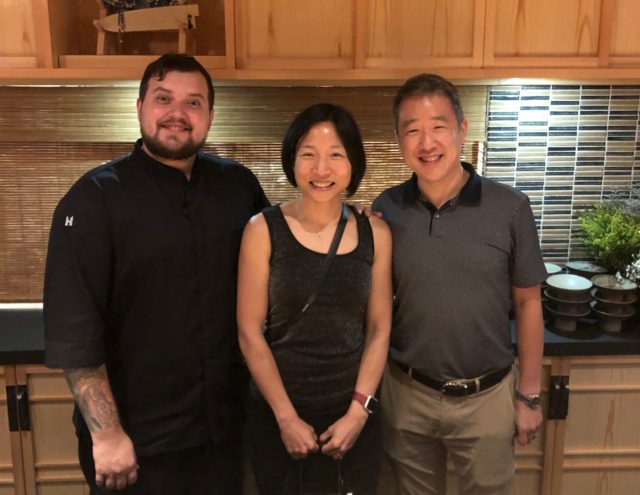
Hello HAKU!
It's been close to a year and a half since we last visited HAKU, soon after it opened in February 2018. We recently visited again, and it was really cool to see how the restaurant has evolved since its early days.
HAKU is a collaboration between 3-Michelin starred Japanese chef Hideaki Matsuo (chef of Kashiwaya in Osaka) and Argentina-born Chef Agustin Balbi, who most recently came from Ocean in Repulse Bay in Hong Kong, but previously worked at various Michelin-starred restaurants in Japan and the US.
Chef Agustin Balbi is from Argentina but his roots are Italian and Spain. His childhood food memories lean towards Spanish food because his Spanish grandmother raised him while he was young. He has also embraced Japanese culture. He spent five years living and working in Japan (at fine establishments like Nihonryori Ryugin!). He speaks fluent Japanese and is married to a Japanese woman.
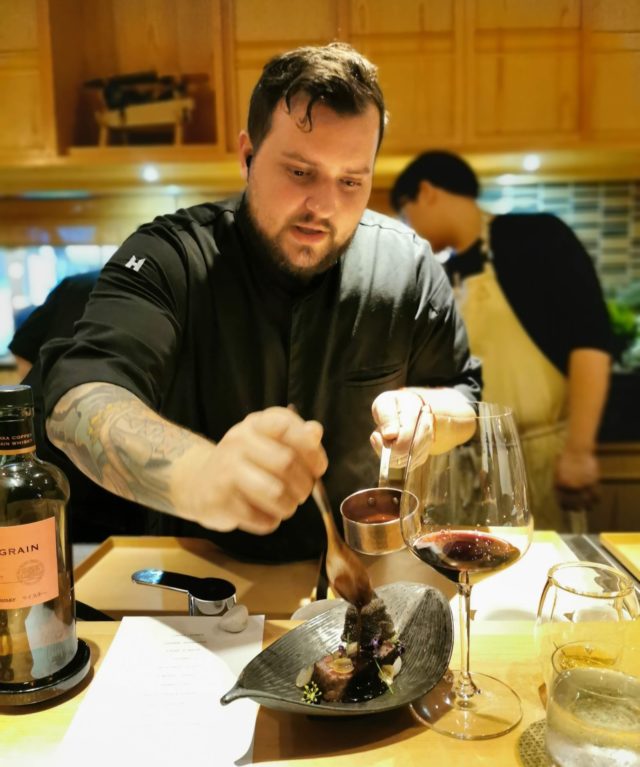
Furthermore, HAKU sources top notch Japanese ingredients from some of the most exclusive vendors in Japan, thanks to Chef Hideaki Matsuo's special connections in Japan. Chef Agustin's takes these impeccable ingredients and adds his own creative and internationally-influenced twist to the ingredients.
What results is a brilliant series of dishes that are the creative blend of Japanese ingredients (and techniques) with Spanish flavors, ingredients, and cooking methods.
Tasting Menu
We came for the dinner tasting menu. In fact, HAKU only serves tasting menus. The dinner tasting menu is HKD1480 while during lunch there is a choice between a 6-course for HKD850 or a 4-course for HKD450.
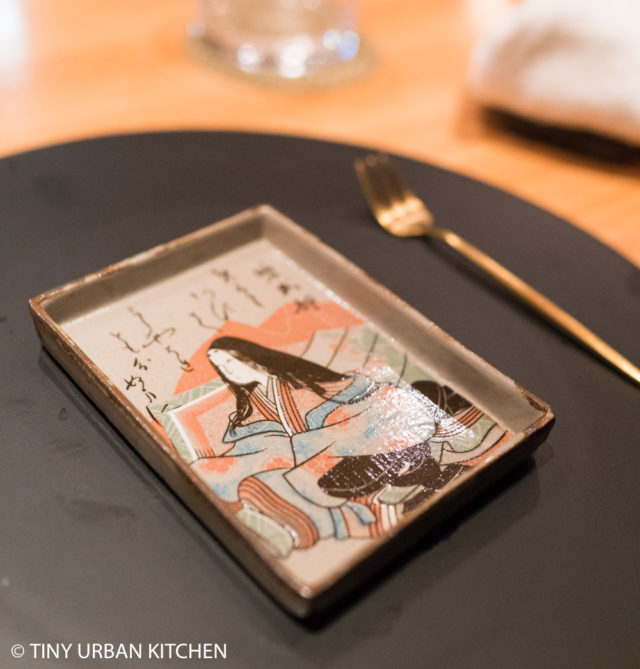
We started with cold noodles, namely green plankton somen (thin noodles) topped with kristal caviar, and shiso hamabi (flower). This dish was light, cold, and refreshing - perfect for summer. The shallow bowl, though beautiful, made it hard to evenly mix the caviar with the noodles, resulting in certain bites that were saltier than others. We enjoyed this with a lovely sparkling white wine.
My favorite bite of the evening was this single Fukuoka oyster served in a milky sauce made from yogurt and the oyster’s brine, saga asparagus, ikura from Australia that was triple smoked (in-house) , and some zest from sudachi lime. The overall bite was absolutely stunning. Extremely balanced, I loved the slight tartness from the sudachi lime and yogurt. Fantastic dish.
The next course consisted of a elegant clear dashi broth made with sake water with daikon, scallop, and yuzu. Chef Augustin advised us to eat the solids first (the scallop, the daikon) before drinking the soup on its own.
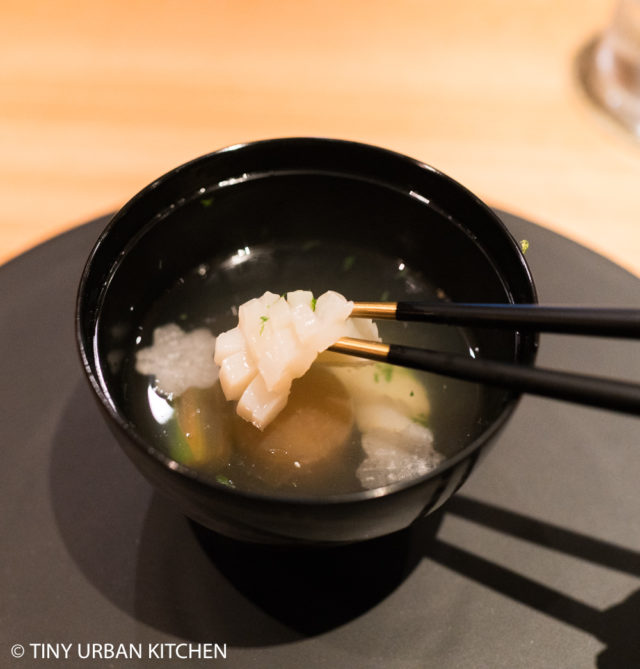
The scallop was amazingly soft, the marinated daikon was deeply flavorful, and the broth was delicious, light and refreshing yet full of deep umami from the combo.
Sashimi Course
Next, we enjoyed a trio of sashimi, each dressed with Chef Agustin's creative touches.
The first one, sweet shrimp (ebi) came with yuzu kosho and shiso flowers. It was a *tad* on the salty side but had a nice spicy kick.
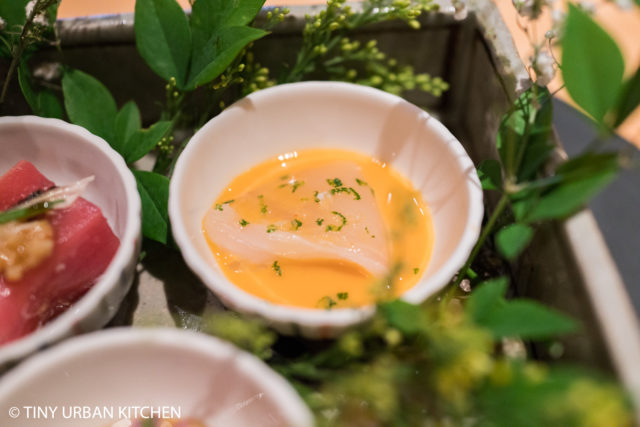
Hirame came with a creamy uni sauce and small amounts of sea salt.
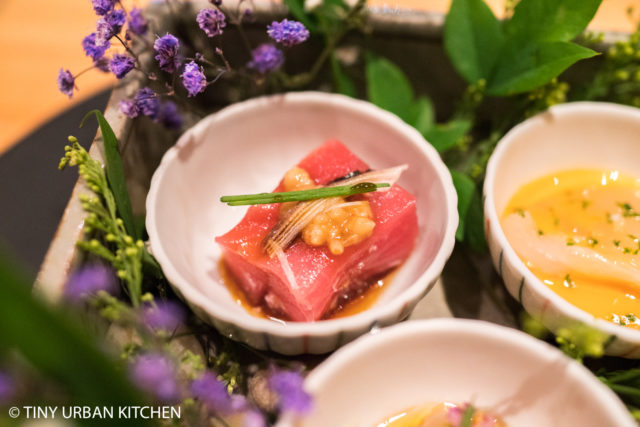
Akami, which he told us to eat last (“because it’s a bit strong), was served with shio koji, yuzu, and a savory piece of nori for a nice umami kick. It was a lovely piece of tuna.
Local Seasonal Greens
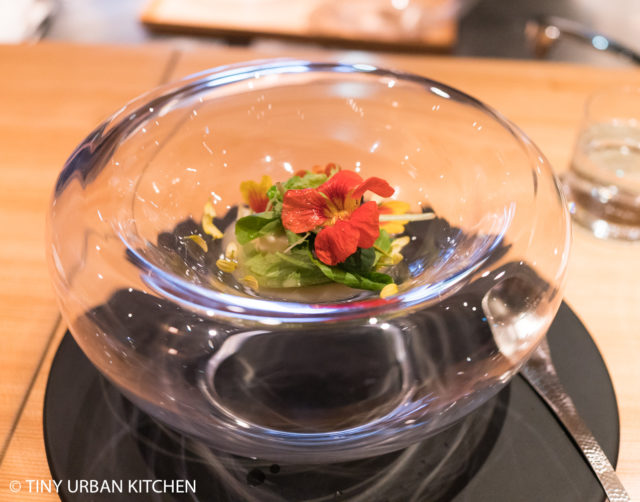
Although it’s especially challenging in dense urban Hong Kong, Chef Augustin really wanted to honor the Japanese tradition of sourcing food locally. As a result, his team travels 3 hours one-way to a farm in the New Territories to personally pick up vegetables for this next course. He says “6 hours went into this dish - 3 hours there, 3 hours back". Additionally, the fresh seasonal vegetables are dressed with a 1-year old aged miso (aged in-house) and yuzu kosho.
Bryan really liked the spicy kick from the yuzu kosho. Some of the bitter greens in the salad reminded me of arugula, but were even more bitter. It was an unusual and interesting dish, though perhaps not one of my favorites.
From the Sea . . .
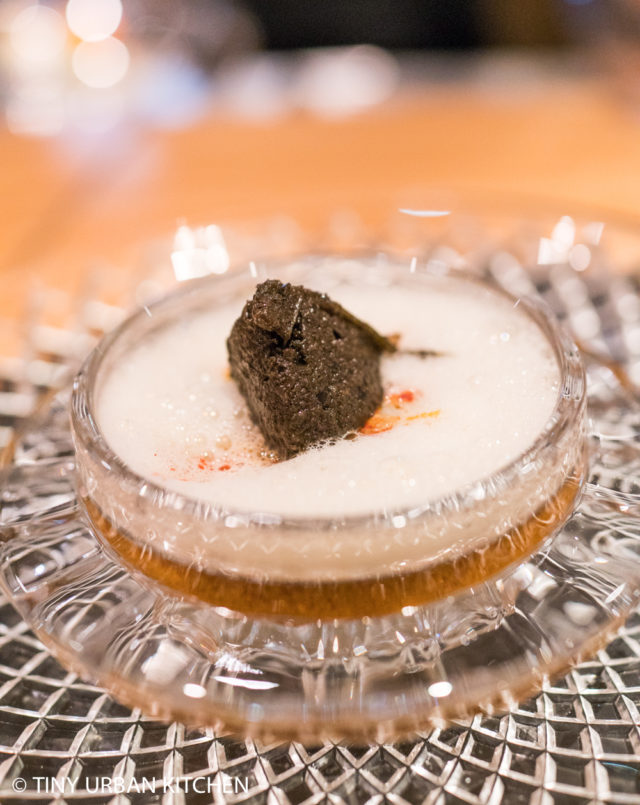
The next course focused on lobster served in a cauliflower puree, topped with a foam made from the lobster head, and a salty fermented tapenade made from olives and shio kombu. Tomato water was added to complete the dish.
Bryan absolutely loved this dish. I agree that the punch of flavors was intense and very good, though the dish is quite rich and powerful. For me, a few bites was plenty (ha ha, sensory overload), though Bryan was happy to eat it all up.
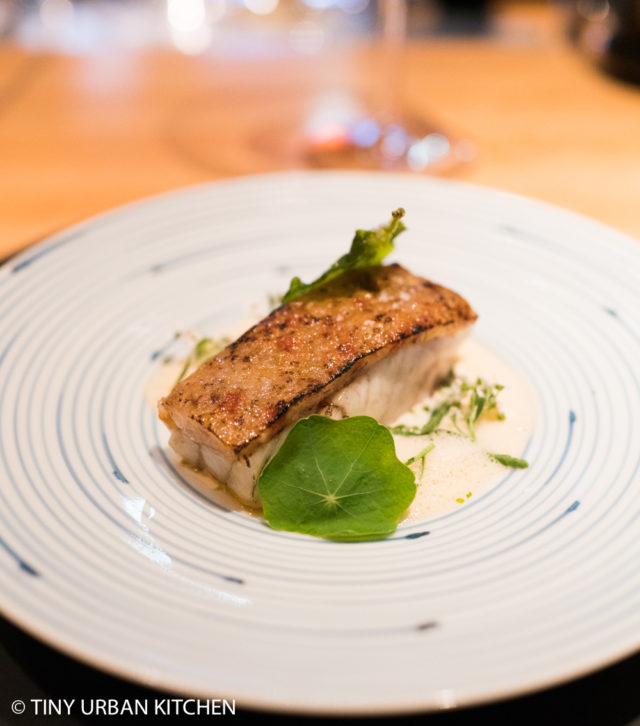
Covina, a Spanish fish, came served with a “skin” or crust made from chopped up pork “manitas” (foot) and served with sea beans and a Spanish chorizo foam.
This dish paired exceptionally well with the wine, a Carignan from South African. 🍷
Though the fish itself was a bit unevenly salted, it was very tender and overall pretty good. Bryan said “you can definitely taste the pork flavor as it mixes with the fish.”
Wagyu Beef
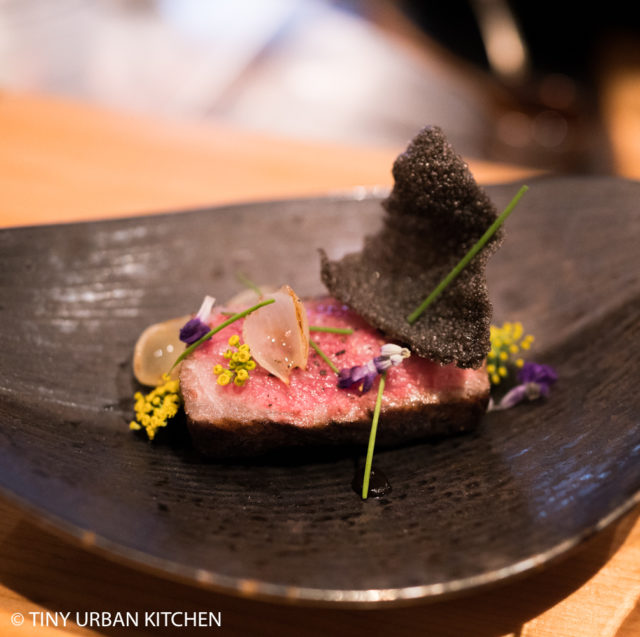
Our next course was a beautiful single piece of charcoal grilled Kumamoto wagyu beef. It came served with a rich and dark pimiento and bone marrow sauce. Black garlic specks, shin tamanegi (scallions), and a squid ink crisp completed the dish.
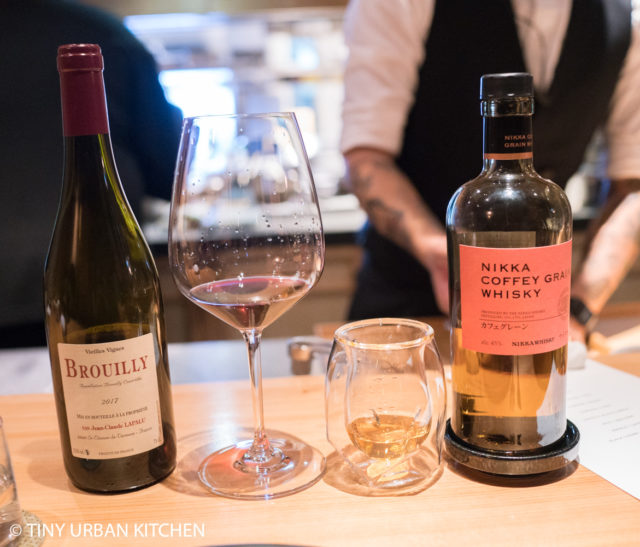
The beef was paired with two drinks: a Nikka Coffee whisky and Brouilly red wine with decent acidity and no tannins. It was fun to go back and forth trying both pairings, both of which worked well.
The Rice Course
We absolutely LOVED the next dish, a cross between a risotto and tomato-based seafood broth. Chef Agustin mixed Japanese rice with a deeply flavorful sauce made from tomatoes, clams, abalone, and chorizo de la vera. Additional slices of abalone completed the dish. The flavors blended together perfectly and we couldn't stop eating it. It was a phenomenal dish.
Dessert
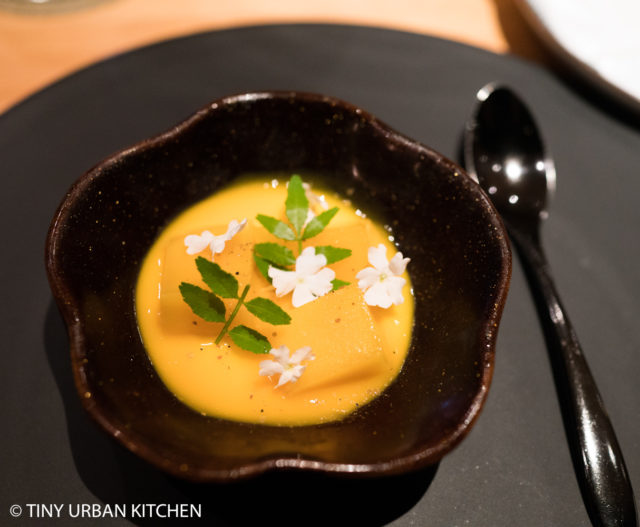
Our first dessert was a mango sansho Spanish style panna cotta with kinome. This particular type of mango, Miyazaki Taiyouno Tamago is extremely sweet (15% sugar) and typically is sold for HKD 1200 per mango (!). This is why we only got to enjoy a few pieces of it!
This dessert was light and refreshing, and the mango was indeed quite nice.
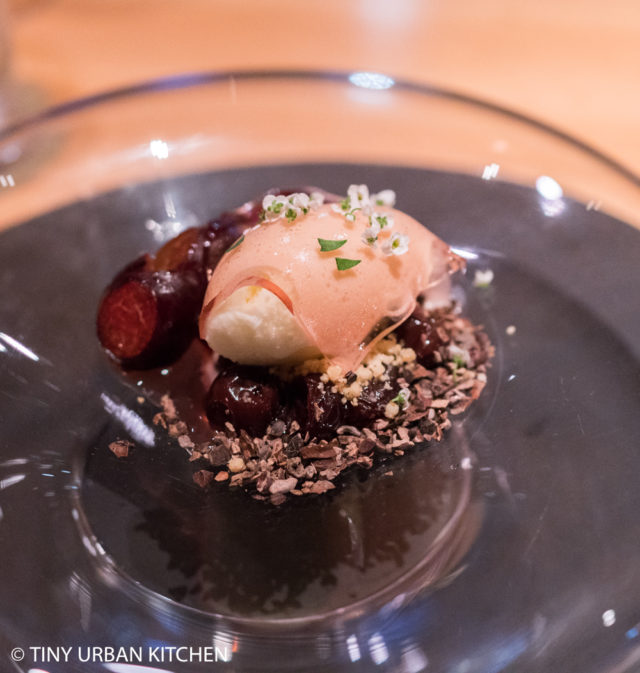
My favorite dessert was a cherry-themed dessert that included both confit black cherry (cooked in syrup) and also fresh cherries served with sake ice cream, cocoa nibs, crumble and meringue. I especially loved the cherry flavored gelee layer, the refreshing sake ice cream, and how well the dark cocoa nibs paired with the cherry flavors in general.
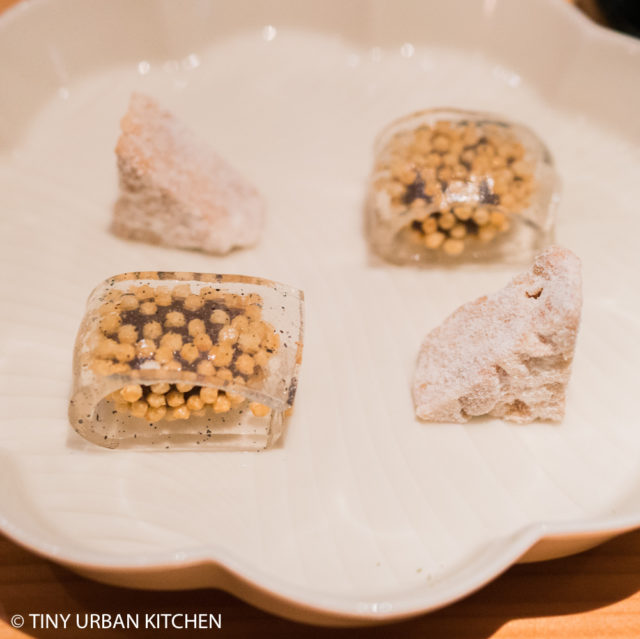
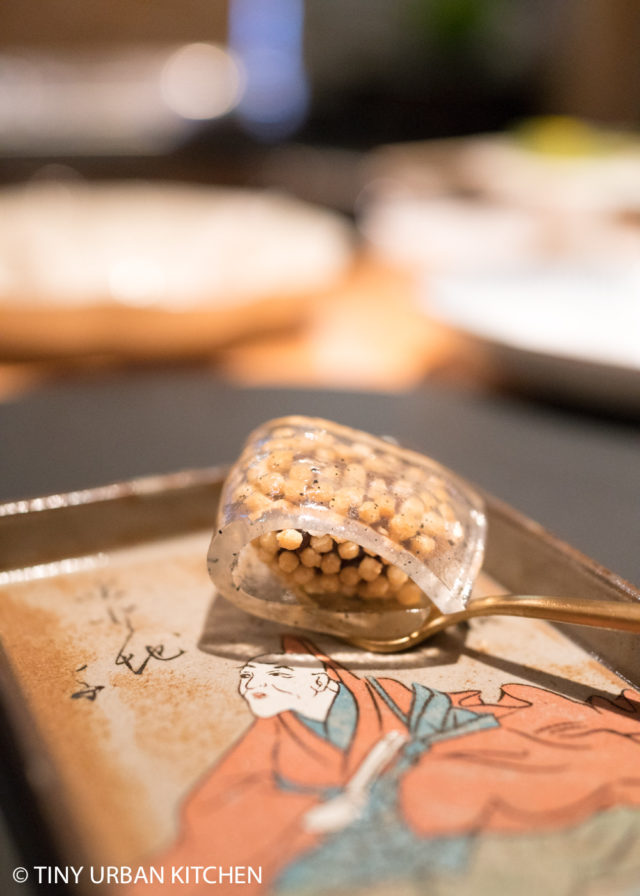
We finished with some fun, small mignardises. Pictured above: a delightful little bite of azuki bean paste covered with crispy rice and gel. It was light and refreshingly not too sweet. Similarly, a chewy peanut bite was also not too sweet and quite good.
Finally, we ended with these cute little matcha white chocolate “lollipops”, which, with a bit of salt, were delicious.
HAKU Hong Kong - General Thoughts
HAKU has changed quite a bit since we tried it over a year ago, when it had only been open for about three months. Although back then I was wow-ed by the ultra-luxurious ingredients and beautiful presentation, for some reason I did not feel like the meal had soul. It was nice, but it did not blow me away.
This meal felt different. I could sense much more of Chef Agustin's heart and soul in these dishes. Unlike the menu we had last year, the current menu incorporate more Spanish elements, and Chef Agustin weaves together his heritage and his Japanese training brilliantly.
In fact, this menu is completely Chef Agustin's creation. Consulting chef Hideaki Matsuo does help with sourcing ingredients, but he is not involved with menu creation. In this case, I think it's better that the chef who is actually cooking for you is also the one created the dishes with his own heart and passion. It shows.
My favorite bites were the Fukuoka oyster, scallops in dashi, Japanese rice with abalone, and the black cherry sake dessert.
Pictured above, all the wines we enjoyed as part of the tasting.
All in all, we had a lovely meal and really enjoyed Chef Agustin's creativity and homage to his past. I'm excited to see how he continues to explore this space of blending his Spanish, Italian, and Argentinian past together with his Japanese training . . . all while having access to some of the highest quality Japanese ingredients in the world.
HAKU Hong Kong
Shop OT G04B, G/F, Ocean Terminal,
Harbour City, 17 Canton Road
Tsim Sha Tsui, HONG KONG
Disclaimer: I was invited to this meal by HAKU who also paid for the meal including drinks. I was not paid to write this post. All opinions are my own.
Related Posts
HAKU Hong Kong - first visit
Sushi Masataka Hong Kong
Sushi Nakamoto Hong Kong
IM Teppanyaki Hong Kong
ICHU Peruvian Hong Kong
Dos Palillos - Japanese Spanish fusion in Barcelona












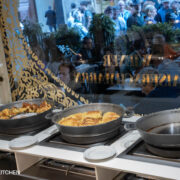
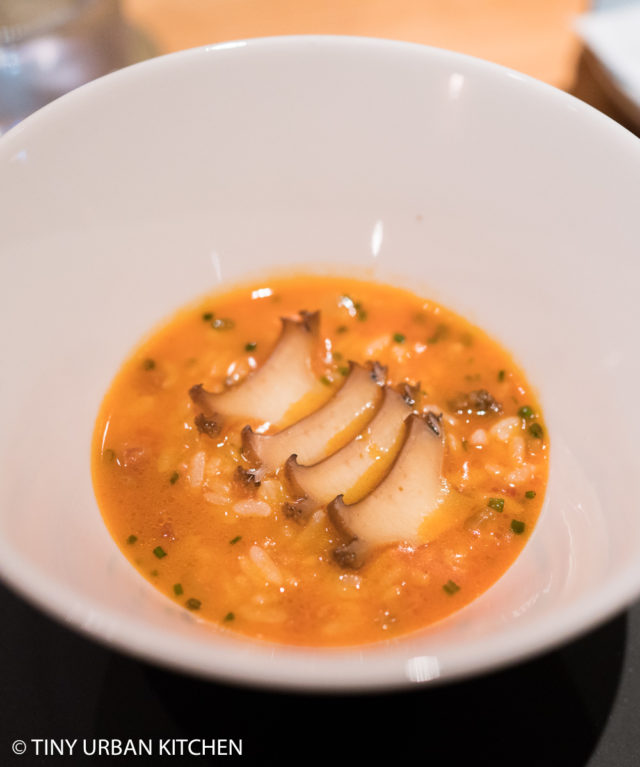
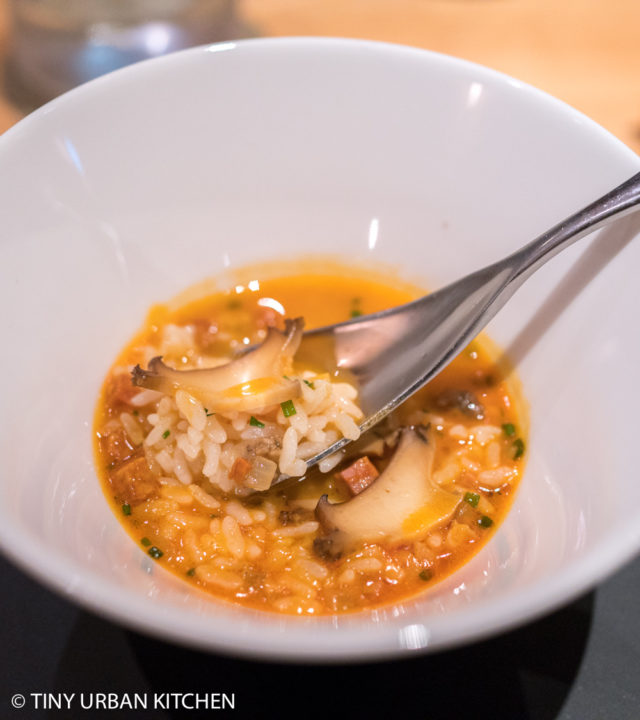
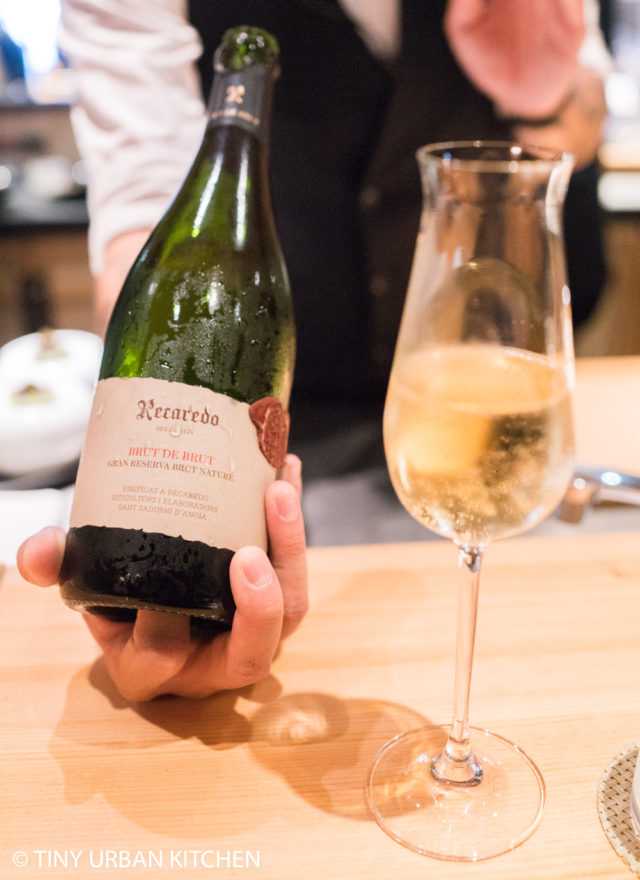
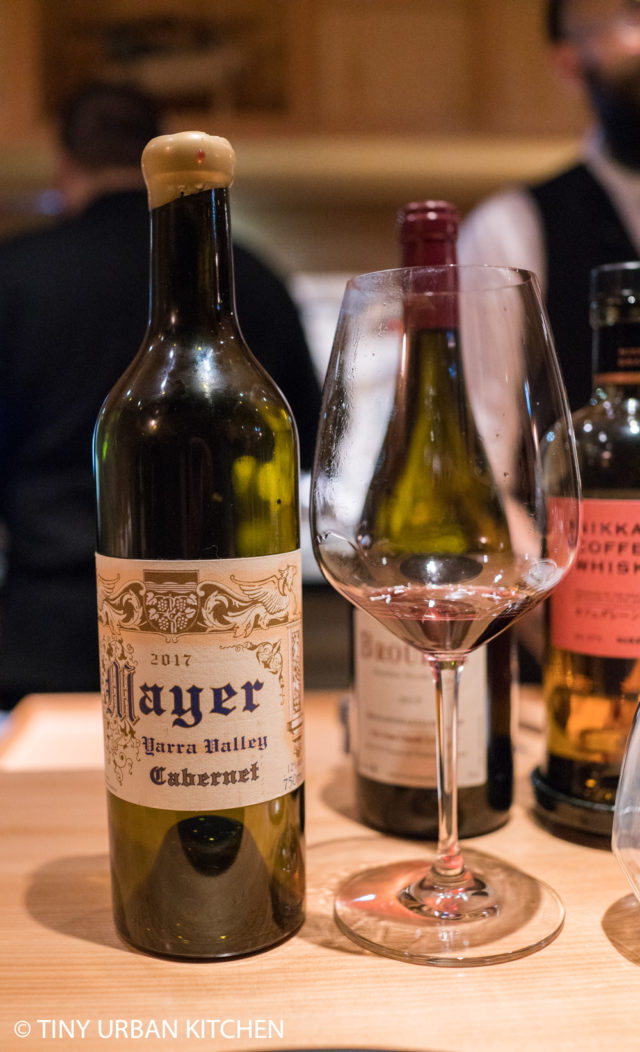
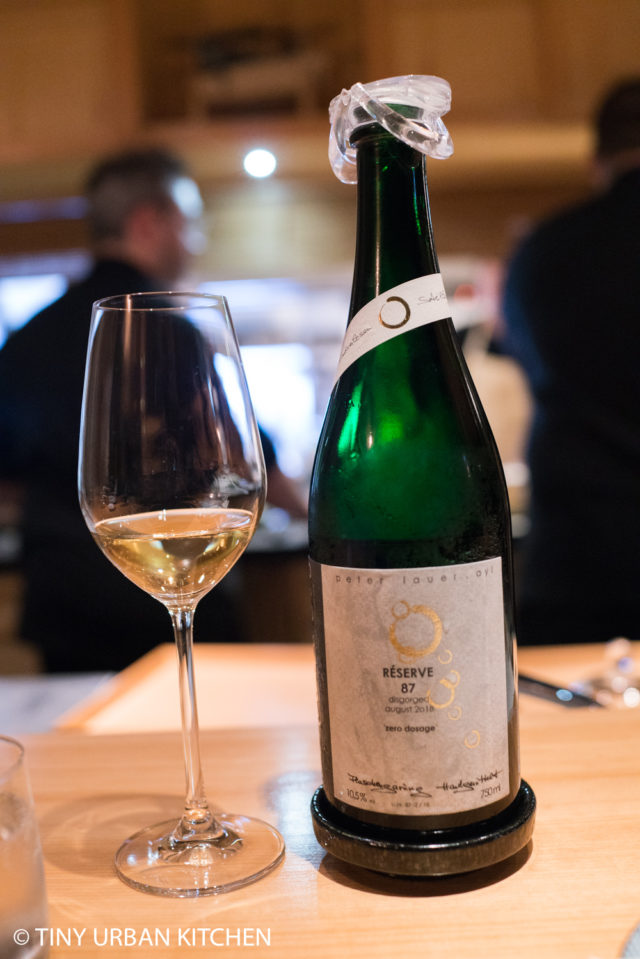
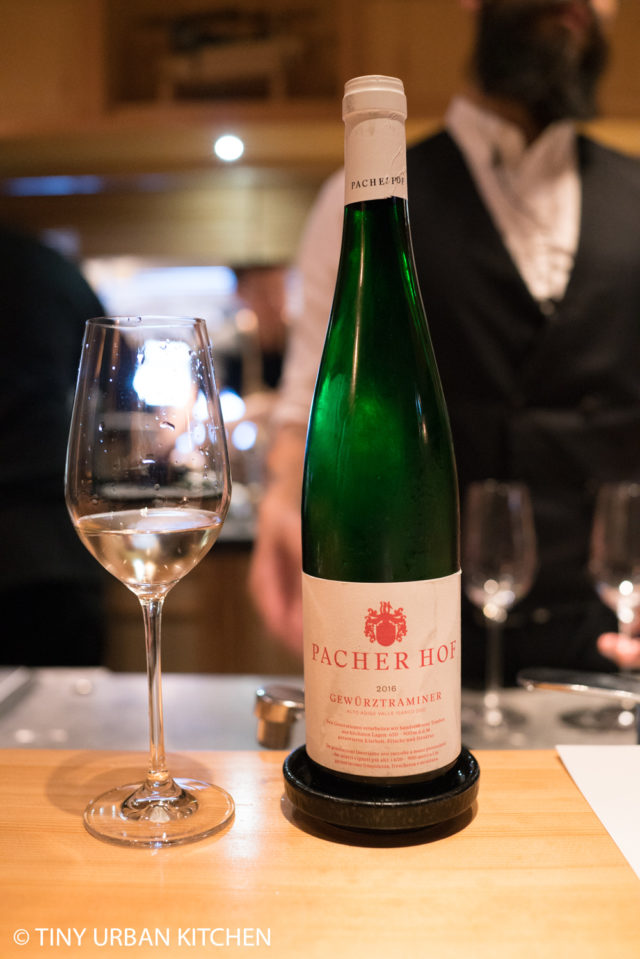
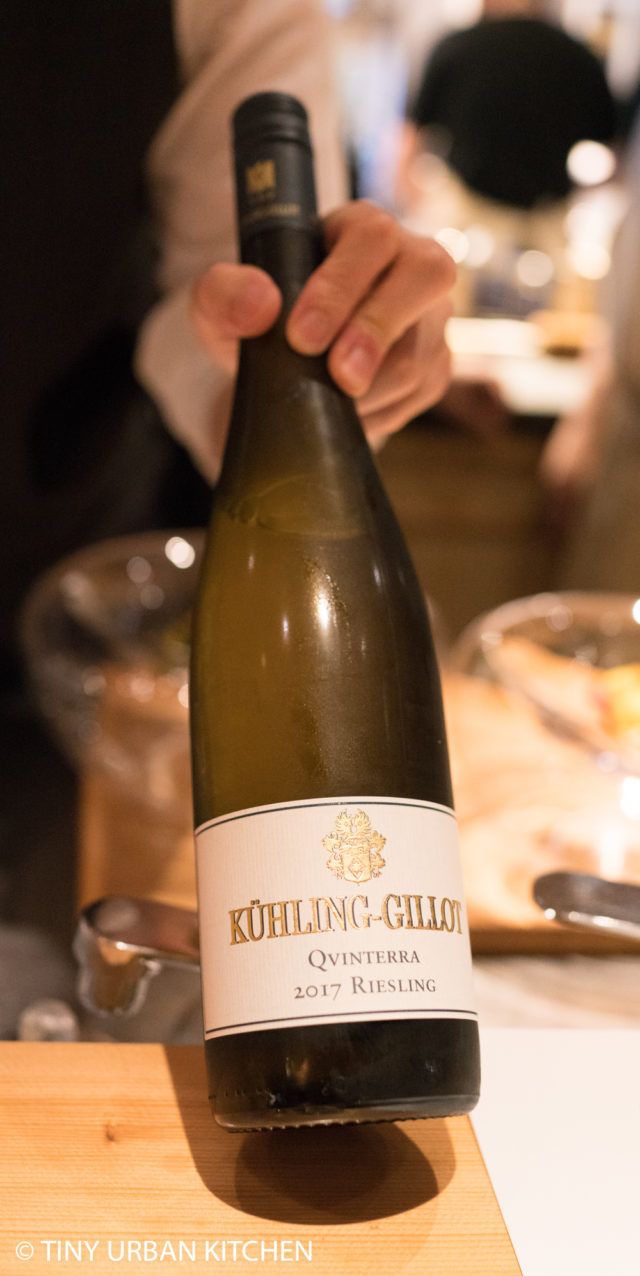
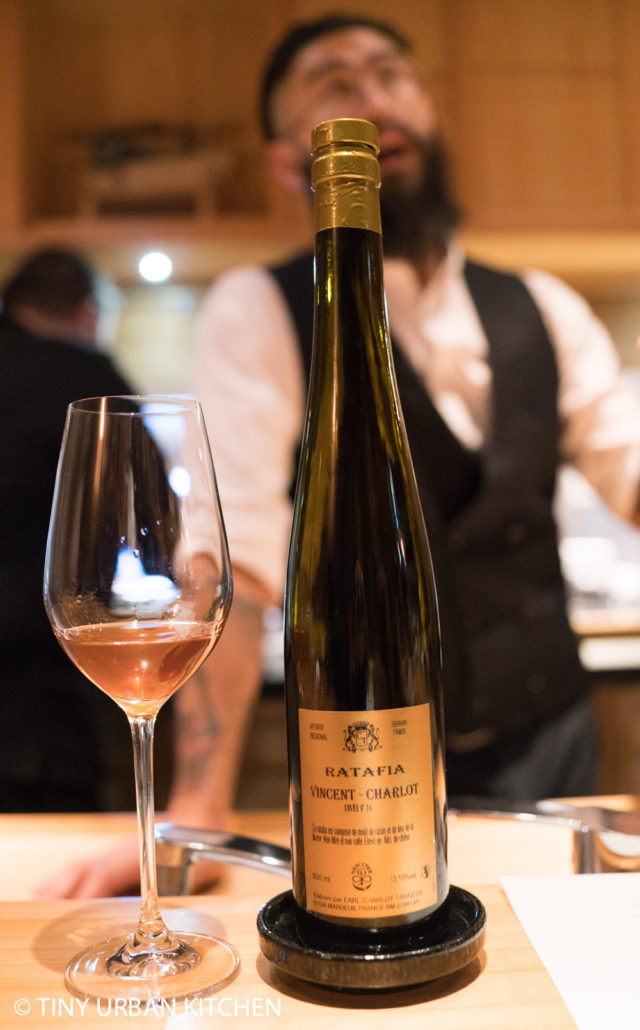
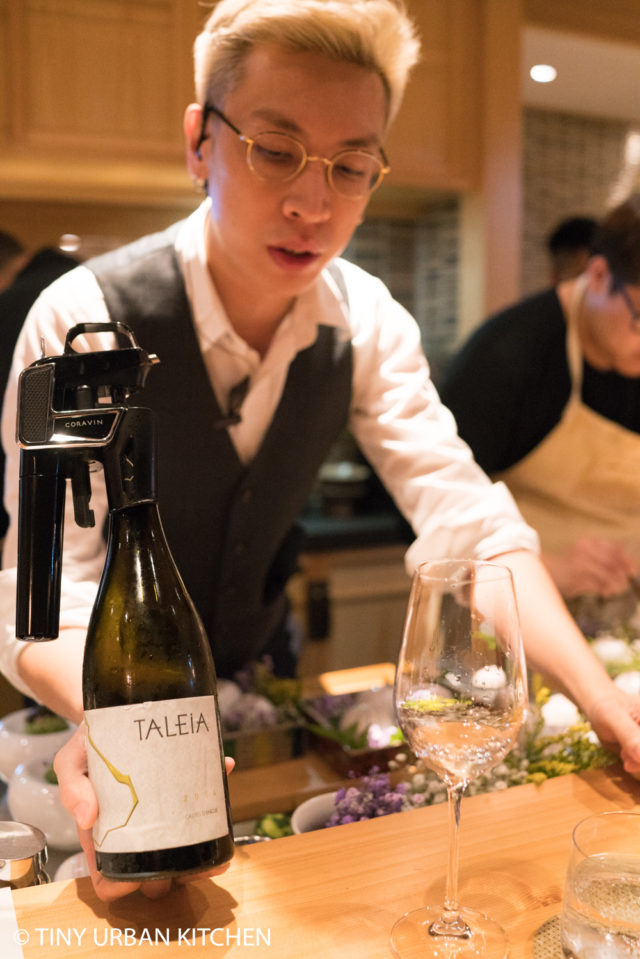
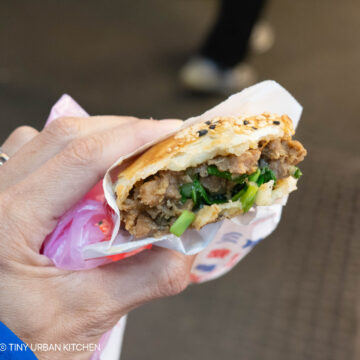
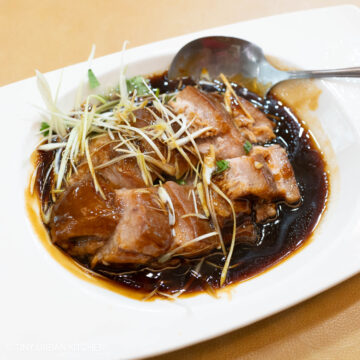
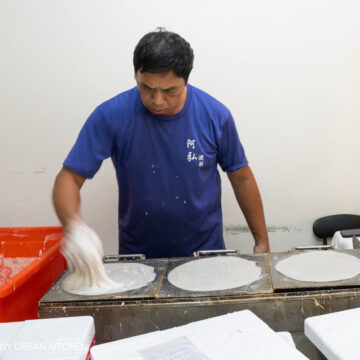
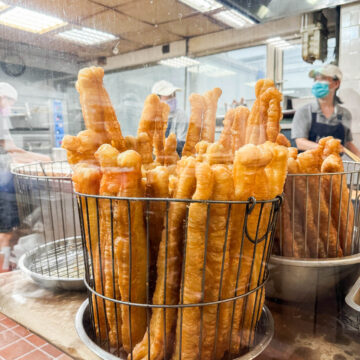
[…] Source link […]